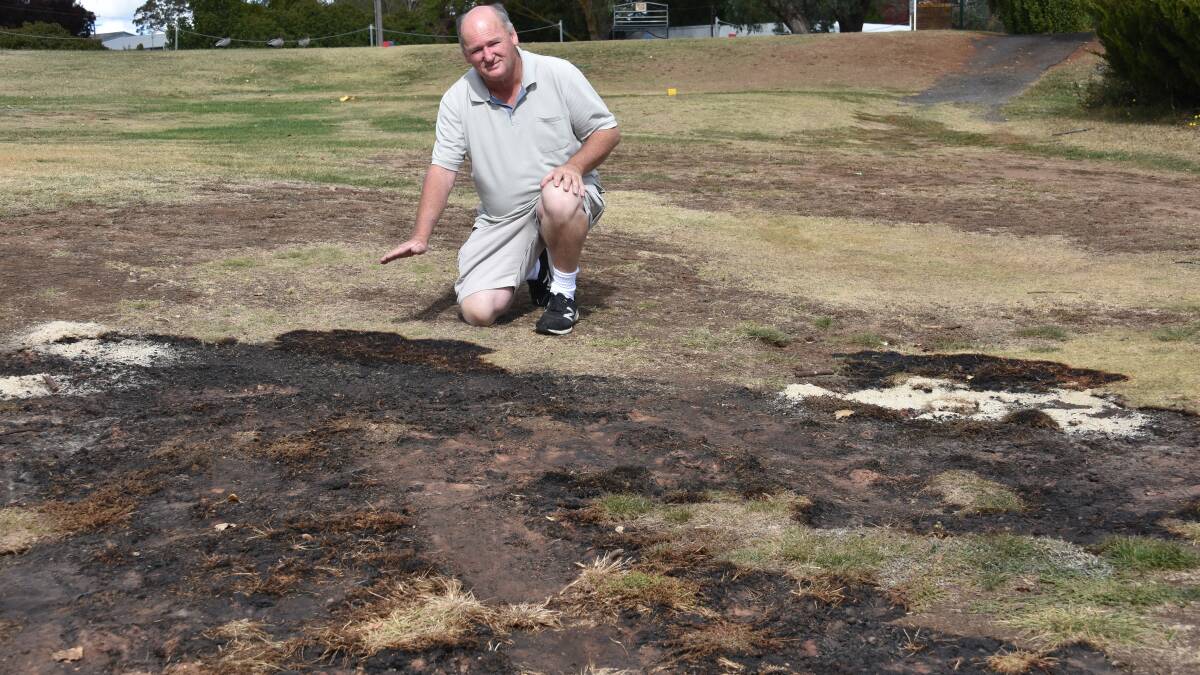
Authorities are taking a watch and wait approach to an apparent underground peat fire that has burnt on the Guyra golf course for more than a week.
Subscribe now for unlimited access.
or signup to continue reading
Guyra Bowling and Recreation Club vice-president David Wilcox said he had consulted National Parks and Wildlife Services, who were worried about the adjoining Mother of Ducks Lagoon.
"We're looking at some ideas on how to fix it, but the next couple of weeks, we're just going to wait and see whether it burns itself out."
READ ALSO:
The now-10 metre patch of blackened ground has smouldered and smoked for 10 days. The fire started on Sunday, April 7, during the Westpac Rescue Helicopter Service's annual fund-raising golf day. A group of men saw the smoke coming out of the ground as they finished their ninth hole.
Although the burnt area has doubled since then, Mr Wilcox said the fire is not a hazard at this stage.
"We thought it might come towards the golf ground just here, but it's going the other way. There's no real threat to anything at the moment - but if it starts to threaten anything, we'll have to look at it then."
"It's obviously very hot under the ground somewhere, but we don't know where, or how deep, or anything else, so we're playing it by ear. We're hoping Mother Nature's letting us take her course, and we'll see what happens."

National Parks and Wildlife Services believe the fire is caused by underground peat combusting. (More lurid speculations included hellfire, ghosts, and volcanoes.) The golf course is built on a drained part of the Mother of Ducks Lagoon, which, unlike other upland wetlands, has a deep layer of peat underneath.
This is not the first time the phenomenon has occurred. The lagoon's peat fire bed burnt for 3 months in 1901; during a drought from 1917 to 1919; and again in 1966, 1985, and 1986.
Guyra resident Gwen Williams remembers seeing a peat fire when she was a girl, more than 70 years ago, she estimates.
"I didn't actually go across to it because it was over the other side, but I used to see the smoke. Obviously when the lagoon filled up, which it did on its own accord, it must have put the fire out, because it wasn't there later on."
In those days, Mrs Williams said, the lagoon was a common where locals could keep cows and horses for sixpence a week; when the lagoon filled, animals would graze on the reeds.
Mrs Williams used to go down in her lunch hour, and watch the water birds.
"I spent a lot of time around that lagoon, then I watched it being drained," she said. "That broke my heart."


